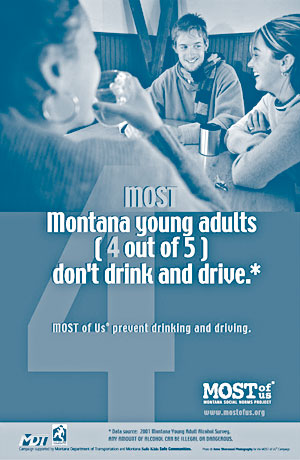Human behaviour is complex, yet it’s been proven time and time again that our thoughts and actions can be influenced by straightforward messaging and design.
This is where the EAST framework comes into play.
Back in 2012, the Behavioural Insights Team (BIT), based in the UK, created the EAST framework to enhance their knowledge of behavioural approaches across the policy community.
Today, we have learnt from this framework and incorporated it into our marketing campaigns and copywriting efforts.
Tell me more about the EAST framework
The Behavioural Insights Team stated that “If you want to encourage a behaviour, make it Easy, Attractive, Social and Timely (EAST).”
So, let’s delve into this acronym…
Easy
Google describes the word ‘easy’ as something that is ‘achieved without great effort’. When you attempt to alter a person’s behaviour, the most effective way to achieve change is by making the process uncomplicated and straightforward.
The Behavioural Insights Team identified three factors that help make behavioural changes easy:
- Harness the power of defaults – people often go with the thing that requires the least amount of effort, such as not having to change settings on a TV that is already set up for you.
- Reduce the ‘hassle factor’ – in life, we often put off tasks which require many steps or have a long process, like cancelling a phone contract (we’re looking at you, Vodafone!)
- Make the message simple – this will help people understand exactly what is required of them from the get-go and only increase the chances of the task being completed.
How do we make campaigns easy?
The people who see your adverts, social content or messaging need to immediately get a clear understanding of what you’re trying to say. A prime example of this was the ‘Hands, Face, Space’ messaging for the Covid-19 campaign to help stop the spread of the virus. The use of the power of three simplified the message, while making it easy to understand at first glance, and most importantly for the time – easy to remember.
When you scroll your social media feed, the first part of a post you normally see is the asset, followed by the copy. Research has shown that the average user takes three seconds to decide whether your content is worth reading or watching. If your assets use text in the graphic, the wording needs to be powerful enough to stop the scroll.
Action this straightaway with carousel posts that summarise your brand’s blog content. They reduce hassle for users, since they can easily swipe through to get all the information without needing to click off-social to a website. Make sure to include a thought-provoking hook on the first graphic that conveys your message and sets the viewers expectations for what they’ll see if they swipe. Use wording that’s easy to understand, since the last thing you want to do is alienate your audience.
Attractive
Creating messaging that entices your target audience and incentivises them to take action is a sure-fire tactic to captivate their attention. This concept aligns with our experiences as children – we were often rewarded for completing mundane tasks, such as homework or cleaning our rooms, and toys and books used big, bright colours to get our attention.
As we grow up, rewards lessen and the world becomes a slightly more grey place. This is precisely why copy and design that incorporates gifts and incentives, as well as the use of imagery and colour, continues to stand out.
How do we make campaigns attractive?
Making campaigns attractive isn’t all about design alone; the objective is to capture attention. Take Indonesia’s musical roads, for example, where drivers are rewarded for driving at a consistent speed by the bumps in the road playing a musical tune. The idea behind the melodic measure was to reduce the number of accidents on the selected roads, as the tunes helped drivers to stay awake – and thankfully, it worked.
This is a classic example of incentivising behaviour. The sign would have drawn attention to the upcoming task and reminded drivers to drive at the speed limit and, when that was achieved, the drivers were rewarded with a tune to listen to on the road. A much more fun, attractive way to drive a campaign while changing behaviour.
When you’re ideating any marketing campaign, always consider what the user is going to get in return. Whether in the form of knowledge, a gift or a surprise, the value exchange should grab attention enough for a user to care about what you’re saying.
Social
Social pressure is all around us. Most people will have experienced this at some point during their life; whether at school trying to keep up with friends, or making that healthy salad to stay consistent with your colleagues and their lunches in the staff room.
We look up to others within our social network, and their behaviour will often inform our own. Word-of-mouth from these networks can directly influence our decisions, and what the Behavioural Insights Team found is that when commitment is given within social groups, it’s a driver to complete an action. For example, someone who decides to run a marathon for charity is more likely to complete their goal by pledging publicly to complete the run, with social pressure from friends, family and public opinion.
Descriptive norms are another big factor of the Behavioural Insights Team’s research – they explore our perception of how people should behave. When your peers complete tasks in a certain way, you may feel pressure to conform to this behaviour in order to avoid feeling left out or being seen as different.
How do we make campaigns social?
A perfect example of descriptive norms in action is Montana’s “MOST of Us Don’t Drink and Drive” campaign. By stating that four out of five young adults don’t drink and drive, they created a social norm amongst people aged 21-34, suggesting that drunk drinking was the exception and not the norm for their peers. The campaign saw a 13.7% decrease in reports of drunk driving and a 15% increase in the use of designated drivers who stayed sober.
The messaging created pressure on this group to conform to what others did and showed that this was the key driver of the campaign. We can use this same messaging within campaigns, especially for charities looking to increase their donations or businesses which require more tedious action, such as paying bills or booking appointments.
Timely
Sometimes the factor of time is enough to change the thinking and behaviour of a person. You might just catch someone at the right time to trigger an emotion which leads to an action, but it’s how you can do this on a large scale to enable greater change.
There are moments in life that most people get to experience at some point, such as marriage, a new job or losing a loved one, where certain messages can influence decisions at the time of those events.
The Behavioural Insights Team also stated that people are “more influenced by costs and benefits that take effect immediately than those delivered later.” Time plays an important factor at this point as people have to decide whether it’s going to benefit them long-term or not.
How do we make campaigns timely?
Timing is everything, and by utilising well-considered timing and pinpointing certain actions in life, businesses are able to influence behaviour to get the results they want.
McDonalds is a great example of this. When you place your order, their system will ask if you want to round up to the nearest pound in support of Ronald McDonald House Charities – an organisation which gives families a place to stay when their children are in hospital. The timeliness of this is perfect, as McDonald’s is a place to go together as a family and this may drive emotion within the customer when at checkout to donate.
When tackling issues like boosting donations or encouraging pension sign-ups, you must select the opportune moment for action. This same principle applies to marketing campaigns – in email marketing campaigns, you can prompt users with discounts when they haven’t been as active recently through automations. This will be to catch users at a time when they may be losing interest and help them become engaged once again.
Should you use this framework within your campaigns?
This framework can be applied through all marketing efforts to drive behaviour changes, whether you post a competition on social media in return for engagement or secure sign-ups to an event via email.
With every project you undertake, consider the following questions:
- Is it easy to understand?
- Is it attractive to the consumer?
- Is it sociable enough?
- Is it timely?
If you cannot say yes to at least one of these questions, it might be time to rethink your work.
Remember, the ultimate goal is to drive the behaviour change you want to see in your consumers.





















